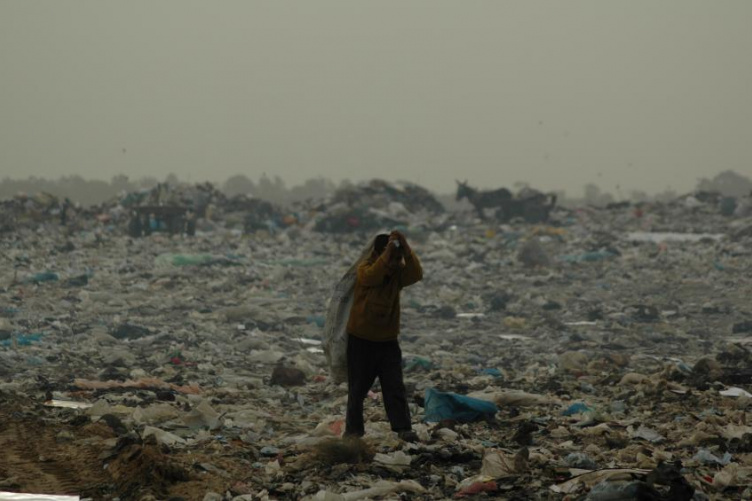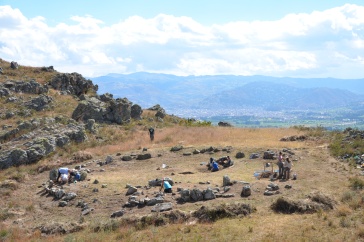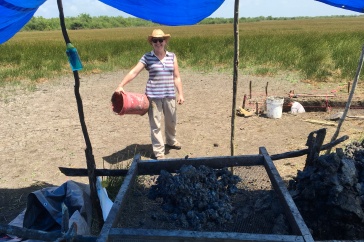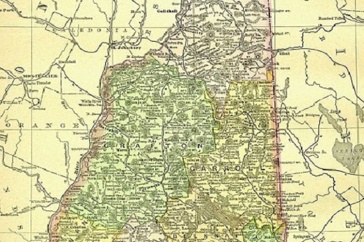
A young Palestinian walks through a debris-strewn field in Gaza where attacks have damaged much of the civilian infrastructure. (Credit: UNEP)
Israel’s targeting of agricultural, water and energy infrastructures in the West Bank and Gaza Strip has had dire impacts on human welfare and livelihoods in both locations, a new report by researchers at University of New Hampshire and Duke University shows.
The report is based on an original database that includes 982 incidents between 2006 and 2017 in which Israeli forces, agencies or settlers damaged, destroyed, disabled or restricted access to sites and structures that provided food, clean water and other essential services to Palestinians.
“The cycle of destruction, rebuilding and destruction again has resulted in significant degradation of Gaza’s civilian infrastructure and economy,” said Jeannie Sowers, associate professor of political science at UNH’s College of Liberal Arts. “Combined with border blockades and increased delays or denials for construction permits, it’s become difficult to secure international aid and investments or import the materials needed to rebuild.”
The systemic use of legal restrictions, permit denials and other indirect forms of oppression is an example of “slow violence,” Sowers explained, referring to a term Princeton University scholar Rob Nixon coined in 2011 to describe environmental damage that unfolds gradually and largely out of sight of the public.
“Slow violence has been especially widely used in the West Bank,” Sowers said. “It includes a range of practices, from the theft of electrical generators to the denial of construction permits to build water systems for Palestinian villages, as well as refusals to connect them to existing systems. Collectively, such actions have contributed to the fragmentation of the Palestinian population into a series of isolated, donor-dependent enclaves.”
In Gaza, repeated strikes on water and sewage infrastructure have damaged 60 percent of the area’s treatment plants, 27 percent of its pumping stations and more than 20 miles of water or wastewater lines, according to a 2014 analysis by the UN Human Rights Council. By 2014, only 10.5 percent of Gaza’s population had access to safe drinking water through the public system, compared to 98.3 percent in 2000.
“For so long, the international community has largely focused on the direct targeting of civilians in war and has overlooked the way in which governments target infrastructure during war and occupations that can persist for decades,” said Erika Weinthal, Lee Hill Snowdon Professor of Environmental Policy at Duke’s Nicholas School of the Environment.
“Our research, which synthesizes findings from hundreds of government documents, UN reports, prior studies and other verifiable sources, shows that when you target objects like cisterns, sewer lines, fishing boats and olive trees, you are also indirectly targeting the humans who depend on them. This has profound long-term implications, not only for Palestinians in the West Bank and Gaza but for peace and security across the region,” Weinthal said.
Interestingly, of the 685 West Bank incidents that Weinthal and Sowers document in their report’s database, roughly 75 percent targeted agricultural sites and structures. The majority of these incidents were carried out by Jewish settlers and involved the destruction of olive and fruit trees.
Weinthal and Sowers published their analysis Feb. 11 in the journal International Affairs.
To conduct their analysis, they scoured 12 years of records compiled by UN agencies, public utilities and human rights groups; reviewed hundreds of news reports and government documents; and conducted 28 interviews with government officials in Israel and representatives of nongovernmental organizations and aid programs active in the region.
Their data on Gaza and the West Bank comes from a larger database they have compiled that documents incidents of infrastructure targeting across the Middle East and North Africa.
“What is happening in Gaza and the West Bank is not an isolated problem,” Weinthal emphasized. “Our database shows this type of violence is occurring increasingly in conflict zones throughout the region.”





















































